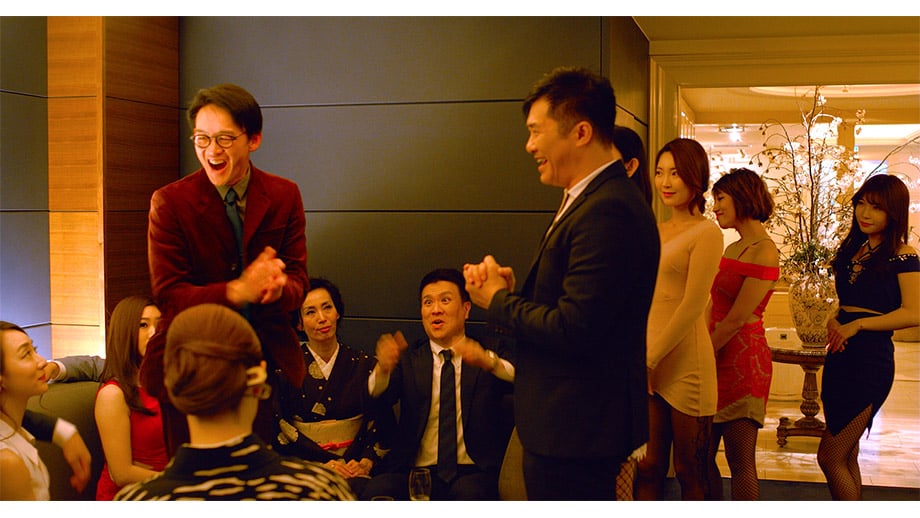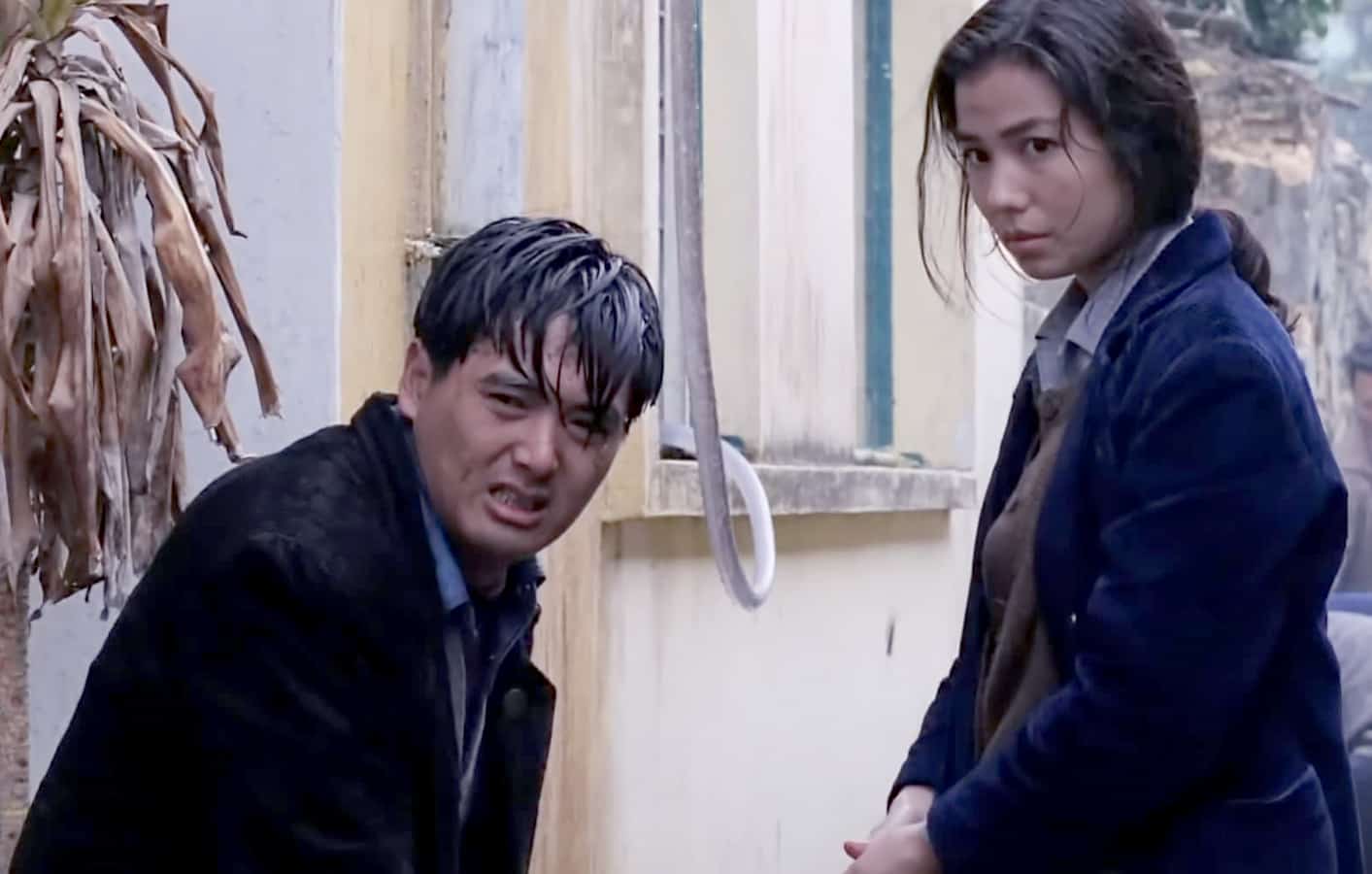After shooting two movies while travelling in Europe (“No Where, Now Here” and “Somewhen, Somewhere“), Lim Kah-wai returns to Osaka, where he graduated in 1998 majoring in Electrical engineering, to shoot a film that still functions quite a lot like a tour guide, although this time, in the original “underbelly” of the city, as seen, for the most part, from the perspective of a number of “dark tourists”. “Come and Go” had its World Premiere in Tokyo.

The protagonists of “Come and Go” are many and differ radically. There is a young man from Vietnam who works as part of a technical training program, which, in his case, looks much like modern slavery, since he is not allowed to quit until his 3-years-contract expires. There is a Nepalese man who used to work in an Indian restaurant and now dreams of opening a restaurant specializing in his country's food. He is learning Japanese in a school for foreigners and soon becomes rather friendly with his teacher, a middle-age woman whose police officer husband happens to be in charge of the investigation about a murder that eventually becomes one of the focal points of the narrative. A Burmese student is working two jobs to pay her tuition, but soon finds out that, what she earns, is not enough and that her boss is not as kind and decent as she thought. A businessman from Malaysia is touring the city with a guide while trying to persuade local entrepreneurs about financial opportunities in Malaysia, mostly revolving around food and retirement plans.
A conning producer of porn movies from Okinawa is struggling with his business, since he cannot find actresses to perform (and accusing the MeToo movement), while the yakuza are pressuring him to return the money he has loaned from them. When a Hong Kong “tour agent” approaches him in order to find Japanese porn actresses for a number of Chinese customers, the producer sees a chance that ends up with him hiring a number of Korean girls that were brought in Osaka by a call-girl agent. A Japanese country-girl with no money seems unable to escape the hostess world, a Taiwanese pornography otaku is touring the local sex industry and eventually ends up with a Chinese who tries to do the same but constantly fails. Lastly, a Japanese-American faces his own problems in his effort to fit in.
Let me start with the obvious. At 158 minutes, the film is too long and the story could easily do with a fewer protagonists, since after a point, a number of them are lost in the labyrinth created by their stories. On the other hand, Lim Kah-wai shows a rather steady hand in keeping all the stories together by focusing them on a number of topics and the city of Osaka, which soon emerges as the true protagonist.
The comments communicated by the narrative, just like the protagonists, are many and various. The difficulties of living in urban centers, particularly for immigrants (either local or foreign) who are constantly exploited, both in financial and social terms, is one of the most evident comment in the movie. Through this notion, Lim also explains the various ways a number of people end up being paid for sexual services or working in the sex industry , whose penetration in society and the innumerable ways it functions is another of the central themes of the movie. At the same time, however, the story also shows that this concept has two sides, in the distinct capitalist terms of supply and demand. In that fashion, the story also highlights how Japanese porn, in its various manifestations, has become a crucial tourist attraction, for boththe rich (as the Chinese businessmen in the film) and the “poor” (as the two middle-aged men who eventually meet each other). The concept of “hentai” and the ways Japanese sexual perversion has ended up defying a whole country emerges as another, rather sad comment, as much as the fact of the notion that money can buy anything in Osaka (Japan if you prefer), including people.
Lastly, the alienation so many people feel in the megalopolis is also highlighted through a number of characters, and also from the nature of the crime that features in the story.
Despite the overall dramatic premises of the film, Lim Kah-wai manages to include a number of moments of humor, mostly deriving from the interactions of the two elderly sex otaku, with Douzi (who also acted in “After All These Years” in 2010) being the main medium of this aspect, with his constantly perplexed look and the rather hilarious, ignorant comments.
Furthermore, Lim ends up showing that despite the many differences people may have, they can always find common ground and come together, even if that is only common struggles and sex, in a comment that concludes the movie with a certain optimism, even if somewhat romantic and idealistic.

In “Come and Go”, Lim seems to have the biggest budget of his career, and he has managed to spend it in the best way, investing in the cast and the production values for the most part. Makiko Watanabe, Shogen and Manami Usamaru give wonderful performances, highlighting their charisma in different ways. The same applies to the smaller parts (if one can say that for the many roles in the movie), with Lee Kang-sheng, Nang Tracy, Lien Binh Phat, Mousam Gurung, and Orson Mochizuki functioning quite well in the narrative, with the first four also highlighting the pan-Asian nature of the production, in another of the director's trademarks.
DP Koichi Furuya has done an excellent job in portraying the various parts of the town and the different people that inhabit it, through a visual approach that manages to highlight all the aforementioned comments in the most artful way, while also functioning as a rather appealing tour to the non- (western) tourist part of the city. Lim's own editing induces the film with a very welcomed fast pace that makes it flow quite smoothly, although, as mentioned before, a bit more trimming would definitely benefit the narrative.
“Come and Go” has its faults, particularly since its multicultural, multi-character nature demands from the viewer patience, unwavering attention and at least some knowledge of Asian culture. However, if one manages to move beyond these “issues” one would stumble upon an impressive movie, which highlights its sociopolitical and philosophical comments in the most eloquent way possible.
















